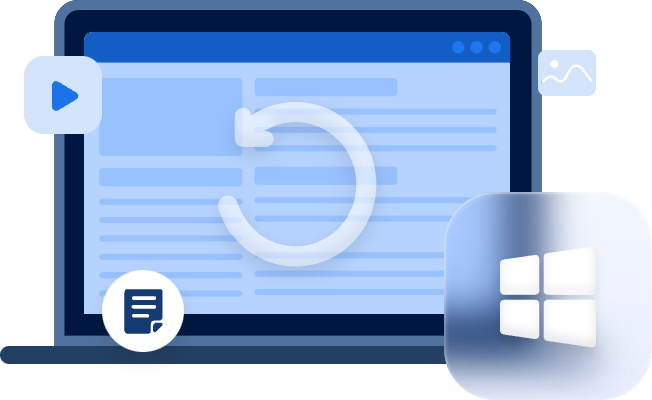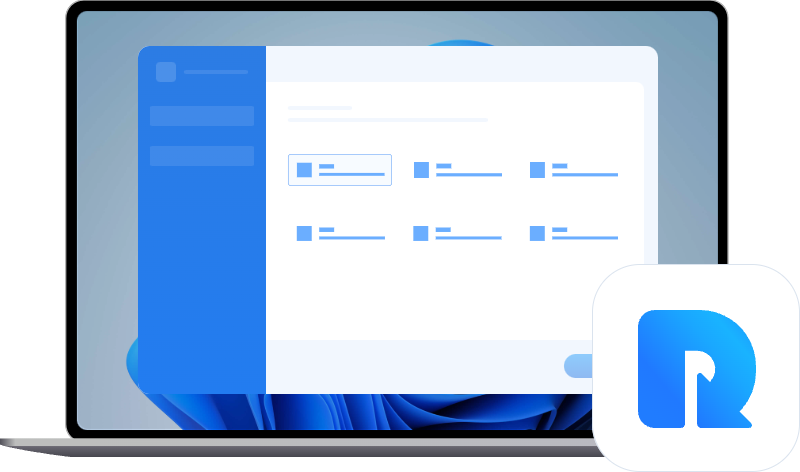How to Recover MP4 Video Files from SD Cards?
Leann to recover deleted MP4 video files from SD cards via professional SD card video recovery tools in this article. Moreover, there're related data loss prevention measures for you.
Is it possible to recover MP4 video files from SD cards?
MP4 stands as one of the most prevalent video file formats, widely compatible with operating systems like Windows, Mac, Linux, Android, and iOS. It's not uncommon for individuals to store numerous MP4 files on their storage devices, which can become quite distressing if some videos are inadvertently deleted or lost due to other data loss incidents.
Thankfully, there exist several methods to retrieve lost MP4 files, contingent upon the cause of data loss, the storage medium, device, and operating system involved. This comprehensive guide will walk you through various effective techniques for recovering deleted or lost MP4 files.
Common causes of MP4 video files
Numerous factors can contribute to the damage or loss of MP4 files, and the appropriate recovery approach depends on the specific data loss scenario. The following list outlines some prevalent causes of corruption or data loss in MP4 files.
- Deletion
- File corruption
- Physical damage
- Virus attacks
2 ways to recover deleted MP4 video files from SD cards
How to recover deleted MP4 video files from SD cards? There're two SD card video recovery tools for you.
1. Recover deleted MP4 video files from SD cards via data recovery software
Without backups, you may have no choice but to seek help from professional video recovery software to recover deleted and missing Mp4 video files from SD cards.
Supported by AOMEI Tech, highly-praised data recovery software-MyRecover is good at recovering deleted & missing videos (WebM, MP4, MOV, etc.) from computer drives.
- After recovery, please set a new saved path to save your retrieved files.
- MyRecover enables you to recover 30 MB of files for free each time. In this scenario, if you only need to recover one WebM video within 30 MB, you do not need to pay for it.
- To recover a large number of deleted/missing files from local hard drives, upgrading MyRecover is a better and more cost-effective choice.
- ★Highlights of MyRecover:
- All-inclusive: Handle data loss scenarios such as deletion, disk formatting, system crashes, or virus attacks.
- High-efficiency: Recover 200+ types of files such as videos (MP4, MOV, WebM, MKV, etc.), Microsoft Word, Excel, PPT, and WPS files, folders, compressed files, photos, audio, songs, and websites from HDDs, USB sticks, SD cards, etc.
- Advanced scanning method: MyRecover runs Quick Scan & Deep Scan automatically to search all the recoverable files. Specify the filename, saved path, date, or size to filter your needed files.
- Convenience: Retain the original filename, path, and format for the deleted files.
- Excellent compatibility: Support NTFS, FAT32, exFAT, and ReFS file systems.
Don’t hesitate to download MyRecover on your Windows 11, 10, 8, 7, or Server PC! In this case, let’s take the D drive as an example.
Step 1. Install and launch MyRecover > hover the mouse over the D drive > click Scan.
Step 2. MyRecover will automatically run Quick and Deep Scan to scan your selected D drive and display all the recoverable files.
You can preview or filter your needed video files according to Document Type, Name, Date, or Path.
- Name: Type the filenames of your desired files to narrow the search area.
- Date modified: Set the date (today, yesterday, last 7/30 days, etc.)
- Size: Filter the file size (<128KB, 128KB~1MB, 1MB~ 512MB, etc.)
Step 3. Go to the Other Missing Files folder and select your desired videos. Then click “Recover x files” to start the SD card video recovery process.
2. Recover deleted MP4 video files from SD cards via Windows File Recovery
Windows File Recovery devotes to recovering lost files from internal and external hard drives, USB drives, SD cards, SSD, and other storage devices.
◢ Pros:
- Free.
- Basic (extensive & regular) modes and advanced (Signature & Signature) modes can support four (NFS, ReFS, exFAT, and FAT32) file systems.
◢ Cons:
- Windows File Recovery only works well with Windows 10 and above.
- This command-line software cannot recover cloud storage and network files.
- There’s no GUI (graphical user interface) for you.
- You need to resemble the basic command line winfr source-drive: destination-drive: [/mode] [/switches] according to your selected mode and switches.
Please refer to these steps to figure out the file system of your USB stick.
Step 1. Connect your SD card to the computer and press “Win + E” to open File Explorer. Click This PC > right-click on your connected USB > select Properties.
Similarly, you can also refer to the following form to check the file system.
|
File system |
Examples |
|
FAT and exFAT |
SD cards, flash or USB drives (< 4GB) |
|
NTFS |
Computers (HDD, SSD), external hard drives, flash or USB drives (> 4GB) |
Step 2. Select the basic “Regular” or “Extensive” mode after learning the file system of your USB drive and data loss scenarios.
|
File system |
Scenarios |
mode |
|
NTFS |
Deleted recently |
Regular |
|
NTFS |
Deleted for a while |
Extensive |
|
NTFS |
Formatted disk |
Extensive |
|
NTFS |
corrupted disk |
Extensive |
|
FAT and exFAT |
Any |
Extensive |
Step 3. Choose some switches from the following form.
|
Switch |
Description |
Supported modes |
|
/y: |
Recover specific extension groups, comma-separated |
Signature |
|
/p: |
Saves a log file of the recovery operation in a different location than the default location on the recovery drive (for example, D:\logfile). |
All |
|
/a |
Overrides user prompts, which is useful in a script file. |
All |
|
/u |
Recovers undeleted files, for example, from the Recycle Bin. |
NTFS Segment |
|
/k |
Recovers system files. |
NTFS Segment |
|
/g |
Recovers files without primary data streams. |
NTFS Segment |
|
/e |
To keep your results manageable and focus on user files, some file types are filtered by default, but this switch removes that filter. |
NTFS Segment |
|
/e: |
Specifies which file types are filtered. |
NTFS Segment |
Step 4. Go to Microsoft Store and click “Get” to download this tool on your Windows 10/11 computers. Then “Open” it.
Step 5. How to recover deleted files from SD cards? Let’s take an example. If you need to retrieve PDF files from the F drive and save them in the D drive, enter “winfr F: D: /extensive /n *.mp4” in the command prompt window.
Step 6. Please copy the above command line in the command prompt window. To start the process, press the “y” key. You can also press “Ctrl + C” to stop the thumb drive data recovery process.
Further reading: How do I protect files on my SD card?
No one wants to suffer the second damage. There’re some pertinent suggestions for you to protect your external hard drive and prevent data loss.
- Be away from high temperatures or humid environments such as sunlight and water.
- After seeing Safely Remove Hardware and Eject Media, you’re ready to eject SD cards.
- Please don’t eject or remove your external HDD as it reads, writes, or transfers data.
- Run the latest anti-virus software to protect your PC.
- Only regular backups can prevent data loss at the source. If you prefer easier backup & restoration steps, AOMEI Backupper is better than Windows features.
- Please think twice before deletion.


